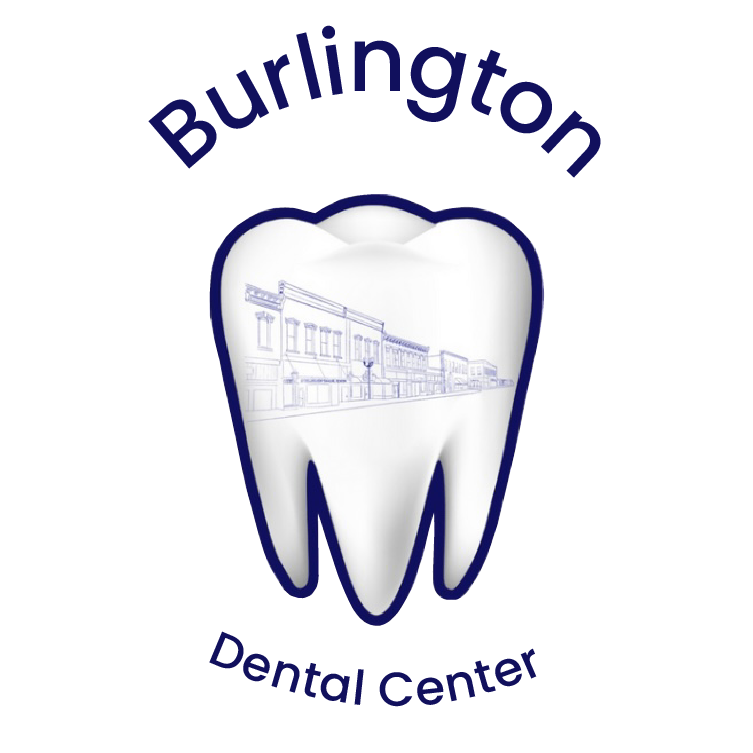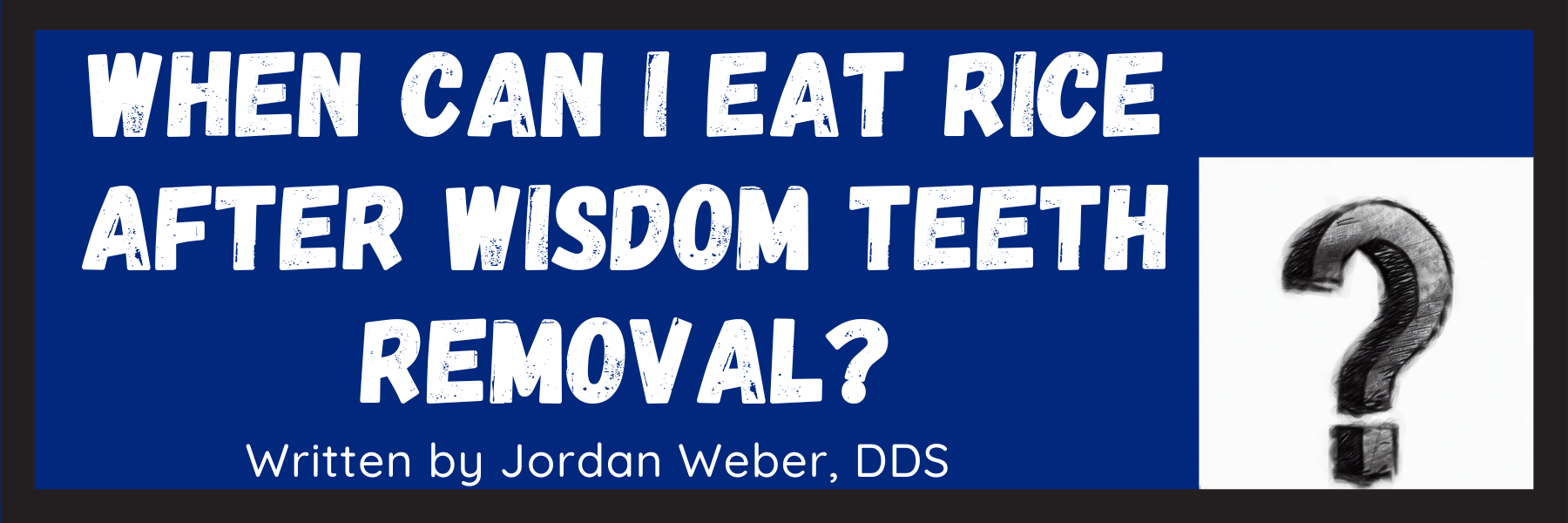After undergoing wisdom teeth removal, many patients wonder when they can safely introduce rice back into their diet. Rice is a popular staple food in many cultures, and its soft texture makes it an appealing choice for those who are recovering from oral surgery.
In this article, we will discuss the importance of consuming soft foods during the recovery process, provide tips for safely eating rice post-surgery, and answer the question of when it is appropriate to reintroduce rice into your diet.
Quick Answer: When Can I Eat Rice After Wisdom Teeth Removal?
While the healing process varies from person to person, it is generally safe to begin eating rice about 5 to 7 days after wisdom teeth removal.
If you choose to eat rice before the 5 day mark, the only real “risk” is getting rice stuck in the extraction site. If this occurs, be sure to lightly rinse the socket to dislodge the rice.
However, always consult with your dentist or oral surgeon for personalized advice and follow their specific instructions regarding your recovery timeline.
How to Prepare Rice for Easy Consumption Post-Surgery
When it comes to preparing rice for easy consumption after wisdom teeth removal, there are a few key things to keep in mind.
First and foremost, you should aim for a soft and easily chewable consistency. This can be achieved by cooking the rice until it is fully cooked, and slightly overcooking it to make it softer. Adding a bit more water than usual can help achieve this desired texture.
Another helpful tip is to consider different types of rice that are known for their softness. Varieties such as jasmine or basmati rice tend to have a naturally softer texture, making them easier to eat during the recovery period. Additionally, you may choose to cook the rice in broth instead of plain water to add flavor and further enhance its softness.
Once the rice is cooked to a desirable consistency, it is important to let it cool down before consuming. Hot foods can irritate the surgical site. Allowing the rice to cool for a few minutes will not only ensure a comfortable eating experience but also minimize the risk of any complications.
Avoid adding anything hard, crunchy, or chewy to your rice — soft additions like scrambled eggs are much less likely to aggravate or reinjure the healing extraction site.
The Importance of Soft Foods During Recovery
During the recovery phase after wisdom teeth removal, it is crucial to consume soft foods to aid the healing process and avoid any unnecessary discomfort. Soft foods are easier to chew and require less effort, reducing the risk of disturbing the surgical site or causing any damage to the stitches.
Opting for nutrient-dense foods, such as rice, ensures that your body receives the necessary vitamins and minerals that promote tissue regeneration, boost the immune system, and aid in the overall healing process.
Further, consuming soft foods can help alleviate the pain and swelling associated with wisdom teeth removal. The gentle and soothing nature of these foods can provide relief and comfort, allowing you to focus on recuperation and minimizing any unnecessary discomfort.
Introducing Rice Back Into Your Diet After Wisdom Teeth Surgery
After the initial healing period, which usually takes 5-7 days, you can gradually begin reintroducing rice back into your diet.
Remember to start slowly and listen to your body's cues. Introduce small portions of rice at first, and if you experience any pain or discomfort, it may be a sign that you should wait a bit longer before incorporating rice into your meals.
It is important to note that every individual's healing process differs, and the timeline for reintroducing solid foods can vary. However, in most cases, it is safe to start with soft rice dishes, as long as nothing crunchy or hard has been added to the dish. These preparations offer a comforting and easily digestible option for those transitioning back to a regular diet.
As the days progress and your mouth continues to heal (usually by the two-week mark), you can reintroduce rice cooked with stir-fried vegetables. Take caution and chew slowly to ensure that you are comfortable and not exerting unnecessary pressure on the surgical area.
Tips for Eating Rice Safely After Wisdom Teeth Removal
When consuming rice after wisdom teeth removal, there are a few essential tips to keep in mind to ensure a safe and comfortable experience:
Chew slowly and thoroughly: Take your time when chewing rice to avoid any potential discomfort or irritation.
Stick to small portions: Start with smaller portions of rice and gradually increase the portion size as your mouth continues to heal.
Maintain good oral hygiene: Ensure that you practice excellent oral hygiene by gently brushing your teeth, rinsing with salt water, and carefully flossing around the surgical site.
Avoid spicy or hard-to-digest condiments: In the initial stages of reintroducing rice, it is wise to avoid spicy or hard-to-digest condiments, such as chili sauce or sticky sauces, which can increase the risk of discomfort or irritation.
Stay hydrated: Drinking plenty of fluids, such as water or unsweetened herbal tea, can help promote proper healing.
Signs That You're Ready to Eat Rice After Wisdom Teeth Extraction
Knowing when you're ready to eat rice after wisdom teeth removal is crucial for a comfortable healing process. Here are a few signs that indicate you're ready to introduce rice back into your diet:
Sustained pain relief: If you have experienced a significant reduction in pain and discomfort, it is an encouraging sign that you may be ready to incorporate rice into your meals.
Decreased swelling: As the swelling in your mouth subsides, you can be more confident in reintroducing solid foods such as rice.
Stable stitches: If your stitches are intact and healing well, it is a positive indication that your mouth is on the mend. However, always consult with your oral surgeon before resuming a regular diet.
Final Thoughts
Overall, rice can be a delicious and nutritious addition to your diet after wisdom teeth removal. However, consuming rice in the first few days after surgery is not advised, since rice could get stuck in the healing sites. If you decide to eat rice during the first few days of healing, just make sure that the rice doesn’t get stuck in the extraction site.
By properly preparing the rice for easy consumption, understanding the importance of soft foods during recovery, and following the recommended timeline for reintroducing rice, you can enjoy this versatile grain without compromising your healing process.
FAQs
Can I eat rice after wisdom tooth removal?
Eating rice is generally not recommended immediately after wisdom tooth removal due to the small grains that can easily get stuck in the extraction sites and potentially lead to infection. It's better to wait until the healing process has advanced enough that the risk of food particles getting trapped is minimized, typically around one week post-surgery.
How long after wisdom teeth removal can I eat normally?
Most people can return to their normal diet within 2 weeks after wisdom teeth removal. It's important to gradually reintroduce harder and chewier foods to ensure that the extraction sites are not irritated or damaged.
When can I stop worrying about food getting stuck in wisdom teeth holes?
Concerns about food getting lodged in the extraction sites decrease significantly after the initial healing period, which is usually around 1 week. By this time, the sites are typically closed enough to prevent food from getting trapped. Continuing good oral hygiene practices, including gentle rinsing, can help keep the areas clean.
What can you eat day 7 of wisdom teeth removal?
By day 7, you can generally start to incorporate more substantial foods into your diet, as long as they are not too hard or crunchy. Options may include soft-cooked vegetables, pasta, soft bread, scrambled eggs, and tender meats. Always base the texture of food on your comfort level and healing progress.
Can I eat rice 72 hours after wisdom teeth removal?
It's advisable to avoid rice 72 hours after surgery due to the risk of grains getting stuck in the extraction sites. Opt for smoother, softer foods that don’t pose a risk of irritating the healing gums. If you choose to eat rice within 72 hours of an extraction, be sure to avoid getting the rice stuck in the socket, and lightly rinse the socket if food becomes lodged in it.
Is rice a soft food after tooth extraction?
While rice is considered a soft food, its small, granular nature makes it less ideal immediately after tooth extraction because of the risk of particles becoming lodged in the extraction sites. It's best to wait until the gums have significantly healed before reintroducing rice into your diet.
* Though the author of this post is a licensed dentist in the state of Kansas, this information is provided for informational and educational purposes only. Please use your best judgment and contact emergency medical services in the event of an emergency.




